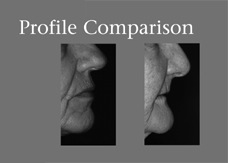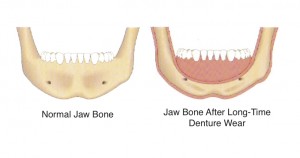Header logo
header top contact widget
Dental Implants
Pregnant Women – Take Special Care Of Oral Health
Posted on Apr 04, 2016 by William J. Claiborne, DDS MS
Mothers-to-be have many guidelines to follow to ensure a healthy baby. They must monitor what they eat, drink and inhale – not to mention the vast amount of medications they must cross off their list during pregnancy.
For those who are pregnant or trying to get pregnant, an important part of tending to an unborn baby’s health is gaining more attention. This is also why a growing number of obstetricians are recommending pregnant patients to a periodontist for a thorough oral examination to determine signs of gum disease.
The oral bacteria of periodontal (gum) disease is pretty potent stuff, as research continues to prove. Gum disease is the leading cause of adult tooth loss in the U.S. and has been linked to heart disease, stroke, diabetes and arthritis.
For pregnant women, elevated hormones during pregnancy create greater risk for periodontal (gum) disease. This is the reason nearly 50% of pregnant women experience swollen, tender gums that bleed easily while brushing. This is a result Pregnancy Gingivitis, a form of gum disease. Because of their susceptibility, the risk for full-blown periodontal disease is higher for moms-to-be, which extends to their unborn baby.
About a third of pregnant females will acquire gum disease due to pregnancy hormones that make the gums more vulnerable to inflammation. However, studies show that oral bacteria can reach far beyond the mouth. Research has determined that gum disease heightens the risk for pre-term delivery (prior to 37 weeks) and babies of low birth weight.
One study showed the preterm birth rate for women without gum disease to be approximately 11% compared to almost 29% for pregnant women with moderate to severe periodontal disease. It has also been shown that gum disease increases the potential for late miscarriage and pre-eclampsia.
Apparently, the risk stems from the entry of gum disease bacteria into the bloodstream through diseased gums. When oral bacteria reaches placental membranes, it can trigger inflammation that can activate pre-eclampsia or early labor.
As research continues, the links between the oral health of moms-to-be and their unborn babies are becoming more profound. One study found pregnant females who had higher blood levels of antibodies to oral bacteria also had higher occurrences of preterm birth and low birth weight babies. These elevated antibodies have been found in amniotic fluid and fetal cord blood samples of infants who were preterm or born at low birth weight.
The good news? Successful treatment of periodontal disease helps to lower the risk of preterm births. As a periodontal specialist, I am trained to treat all levels of disease. If gum disease does exist, our periodontal therapy is safe for pregnant women (as well as all patients).
If your gum are tender or you are having symptoms of gum disease (gums that bleed when brushing, swollen or tender gums, or gums that deepen in color), arrange an appointment for a periodontal exam at your earliest convenience by calling 828-274-9440. Gum disease only worsens without treatment.
Missing Tooth Roots At The ‘Root’ Of Your Problem
Posted on Mar 28, 2016 by William J. Claiborne, DDS MS
When natural tooth roots are missing, the upper or lower jaw bone that once held them goes through a change. It’s a process known as ‘resorption,’ which describes the shrinking or declining mass of the bone.
Resorption occurs because the bone no longer has the stimulating presence of the tooth root. As the bone declines in height and width, neighboring teeth feel the effects of this bone loss. Adjacent tooth roots become bordered by an insufficient bone structure, causing these areas to become susceptible to a higher risk of cavities, gum disease, and tooth breaks or fractures.
While a crown-&-bridge combination can replace missing teeth, a bridge does not restore stimulation to the jaw bone. Eventually, the decline in bone mass reveals itself when a gap becomes visible between the bridge and the gums.
For those who wear a denture or partial denture to replace missing teeth, the pressure on the gums from these appliances actually accelerates the rate of bone loss. And, for those who sleep in these appliances, the 24/7 rate of pressure speeds up bone loss even more.
Bone loss through resorption is also the cause of facial changes, most of which are aging to one’s appearance. These include deep wrinkles that form around the mouth, the corners of the mouth turning downward even in a smile, a pointed chin, jowls that form from the detachment of facial muscles and a mouth that looks collapsed into the face (known as a ‘granny look’).
Halting bone loss can be done through the placement of Dental Implants. Since they are positioned in the jaw bone, they recreate the stimulation of tooth roots. Additionally, Dental Implants restore biting strength and stability without the fear of embarrassing slips.
Dental Implants are also self-supporting. This means that crowning neighboring teeth to support a bridge or partial is not necessary. With the jaw bone as their foundation, Dental Implants stand strong on their own.
Another bonus of Dental Implants? With proper selection, placement and care, Dental Implants are designed to last a lifetime. This is why it is important to have your implants placed by a skilled, experienced doctor. As a Periodontist, my specialty includes this advanced skill in both diagnosis and treatment.
Whenever possible, save your natural teeth to keep those tooth roots where they belong! However, losing a natural tooth doesn’t mean you need to suffer the long-term repercussions of bone loss.
Ask about Dental Implants to restore a natural look and feel while you protect surrounding teeth and bone structure. Call 828-274-9440. Begin with a consultation, if you prefer.
Reasons For Crown Lengthening Procedures
Posted on Mar 21, 2016 by William J. Claiborne, DDS MS
As a Periodontist, my specialty surrounds the treatment of all stages of gum disease and the placement of Dental Implants, for the most part. However, another focus of the periodontal specialty is in the recontouring of gum tissues.
In some cases, this is done to provide cosmetic enhancement to the appearance of a smile. For example, crown lengthening is often performed to correct an uneven smile line. This occurs when there are varying levels of gum tissue arching each tooth. This uneven line of gum tissue leaves an up-&-down frame for teeth most visible in a smile. Even straight teeth look less attractive with uneven gum arches. By contouring the gums to provide a unified border over teeth, crown lengthening provides a more appealing smile overall.
Another esthetic reason for crown lengthening is to repair a ‘gummy smile.’ A gummy smile is one that shows too much gum tissue above the teeth. While this is a genetic trait and is not related to an oral health issue, some people with a gummy smile feel self-conscious when smiling a full smile and tend to ‘hold back.’ In some cases, excess gum tissue can be corrected by careful removal while others may require crowning involved teeth. Crowns ensure the gums can be contoured to a more natural level without compromising the future health of teeth.
There are other reasons for crown lengthening, such as helping to save a tooth from removal. For example, when a tooth has broken close to the gum line, crown lengthening procedures can remove gum tissue to expose more of the tooth. Because a tooth that breaks at the gum line must be removed, this procedure can make sufficient tooth structure available to support a crown. Saving a tooth can keep the patient from having to deal with the decisions of tooth replacement and associated costs.
Crown lengthening is also beneficial in sealing gum tissues surrounding a tooth at its base. This is important after a new crown is placed as it prevents bacteria from penetrating the gums during the vulnerable stage of attaching. By securing the gum tissue around the crown, bacterial entry is avoided and the risk for periodontal (gum) disease decreased.
The crown lengthening procedure is clinically referred to as a Gingivectomy. It is performed with the patient sedated and comfortable. Some swelling and gum tenderness may follow, although most patients only require over-the-counter medications. If you smoke, you can expect the healing period to take longer since the chemicals in tobacco have drying effects on gum tissues. However, most patients are back to normal within several weeks with the beautiful look that crown lengthening provides.
If gum recontouring could provide a more appealing smile, the results of crown lengthening, in many cases, are significant. However, when crown lengthening can save a tooth or help to prevent gum disease, from a Periodontists’ point of view, the advantages are priceless!
Begin with a consultation to discuss creating the smile you desire. Call 828-274-9440 to schedule.
Rocky Dentures? Why Relines Are Of Little Help.
Posted on Mar 16, 2016 by William J. Claiborne, DDS MS
As a dental specialist, I am referred most of our patients by other dentists. Being a Periodontist, my advanced training and skills are ideal for people who have any level of periodontal disease as well as those who want or need dental implants.
When it comes to dental implant patients, what I see most often are those who have worn dentures for a number of years who are exhausted with the uncomfortable rubbing and the inability to eat the foods they once enjoyed.
These patients typically tell me that their denture fit snugly when it was first made. Over time, however, they started noticing that the denture would cause sore spots on their gums. It would move when they chewed certain foods, even when they used denture adhesives or pastes.
I’ve heard patients describe how painful it is to have something as small as a strawberry seed or nut particle become trapped under the denture, piercing into their tender gum tissue. Some have shared how they had to eventually switch to a diet of soft foods that dissolved easily so they wouldn’t have to chew. And, many admit that they started declining invitations that included a meal.
What many people don’t realize when they first opt for a denture is what occurs underneath the gum tissue. This is where the problem lies. It’s not that the denture is shrinking or changing shape. It’s your jaw bone. And the pressure placed on the bone from wearing dentures is only making matters worse.
When natural tooth roots are removed, the jaw bone that once held them is no longer fed the stimulants that kept it healthy. After a few years, it will shrink in height. This decline in mass is what causes changes in facial appearance, such as deep wrinkling around the mouth and the formation of jowls. And, it’s what causes the denture to move.
As time goes on, so does the process of bone loss. This means that the ‘ridge’ your denture was designed for flattens. A reline can rebuild the denture to accommodate some of the change. However, as the bone continues to decline, the denture continues to be ill-fitting.
While the pressure of wearing a denture certainly accelerates the rate of bone loss, a number of denture wearers also sleep in their denture. This round-the-clock pressure speeds up the rate of bone loss even more.
Not being able to eat and fear of embarrassment are common complaints of denture wearers. The solution is dental implants. Not only do implants restore the ability to bite and chew comfortably, they halt the bone loss associated with dentures. This is because they recreate the presence of tooth roots in the jaw bone.
When it comes to your smile, words like rocky, wobbly and slippery should never be a part of the description. When people opt for dental implants to replace an unstable denture, they smile, laugh, eat and even sneeze with confidence.
Eating a healthy diet, socializing with friends and family, and feeling confident are not luxuries. They are essential to a healthy, happy life. Call 828-274-9440 to schedule a consultation. During this, I’ll explain the type of implants that may be best for your needs and goals. We can also discuss estimated costs and payment options.
Recent Posts
Categories
Archives
- September 2024
- August 2024
- July 2024
- June 2024
- May 2024
- April 2024
- March 2024
- February 2024
- January 2024
- December 2023
- November 2023
- October 2023
- September 2023
- August 2023
- July 2023
- June 2023
- May 2023
- April 2023
- March 2023
- February 2023
- January 2023
- December 2022
- November 2022
- October 2022
- September 2022
- August 2022
- July 2022
- June 2022
- May 2022
- April 2022
- March 2022
- February 2022
- January 2022
- December 2021
- November 2021
- October 2021
- September 2021
- August 2021
- July 2021
- June 2021
- May 2021
- April 2021
- March 2021
- February 2021
- January 2021
- December 2020
- November 2020
- October 2020
- September 2020
- August 2020
- July 2020
- June 2020
- May 2020
- April 2020
- March 2020
- February 2020
- January 2020
- December 2019
- November 2019
- October 2019
- September 2019
- August 2019
- July 2019
- June 2019
- May 2019
- April 2019
- March 2019
- February 2019
- January 2019
- December 2018
- November 2018
- October 2018
- September 2018
- August 2018
- July 2018
- June 2018
- May 2018
- April 2018
- March 2018
- February 2018
- January 2018
- December 2017
- November 2017
- October 2017
- September 2017
- August 2017
- July 2017
- June 2017
- May 2017
- April 2017
- March 2017
- February 2017
- January 2017
- December 2016
- November 2016
- October 2016
- September 2016
- August 2016
- July 2016
- June 2016
- May 2016
- April 2016
- March 2016
- February 2016
- January 2016
- December 2015
- November 2015
- October 2015
- September 2015
- August 2015
- July 2015
- June 2015
- May 2015
- April 2015
- March 2015
- February 2015
- January 2015
- December 2014
- November 2014
- October 2014
- September 2014
- August 2014
- July 2014
- June 2014
- May 2014
- April 2014
- March 2014
- February 2014
- January 2014
- December 2013
- November 2013
- October 2013
- September 2013
- August 2013
- July 2013
- June 2013
- May 2013
- April 2013
- March 2013
- February 2013
- January 2013
- December 2012
- November 2012
- October 2012
- September 2012
- August 2012
- July 2012
- June 2012





